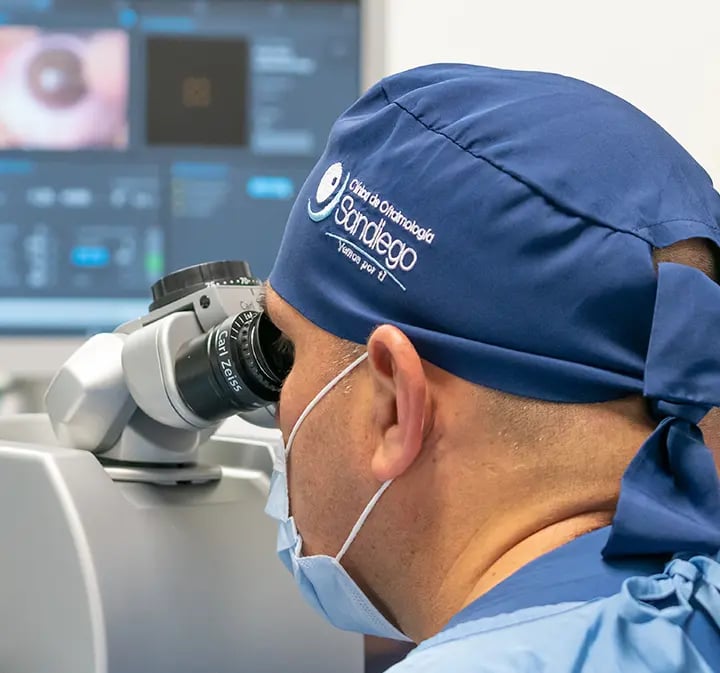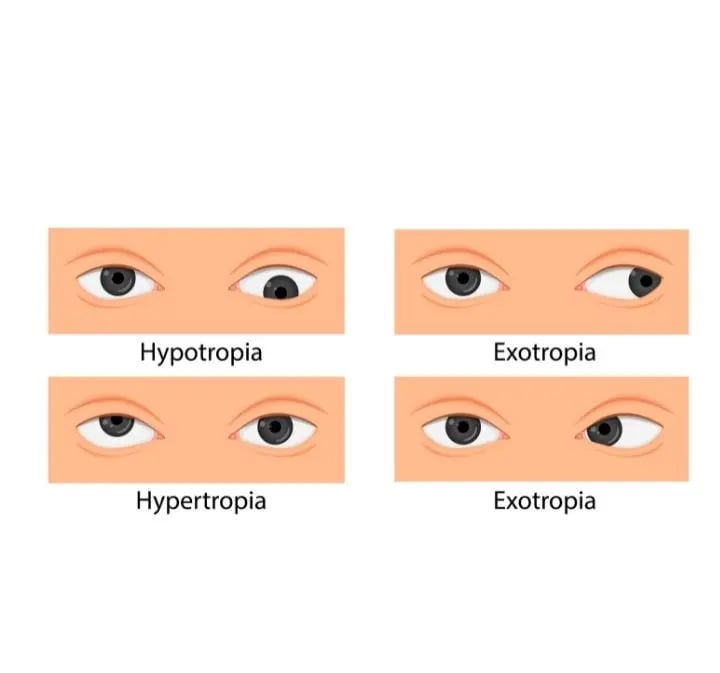Strabismus


Strabismus
Strabismus refers to the deviation of one eye in relation to the other. It is produced by an alteration of the nervous connections between the ocular globe and cerebral cortex. It is caused by the lack of proper visual stimulation during the maturing phase of the visual system, during the first 7 years of life.
The lack of coordination of ocular muscles restrains both eyes from fixating their sight on the same point, which causes loss of both binocular vision and the sense of depth. The earlier the lack of visual stimulation appears, the more serious the amblyopia will be, until it causes the loss of sight in one of the eyes.
In adult patients, the treatment of strabismus and the surgery to correct it may improve the visual field, the capability for fusion of images, control of double vision (diplopia) and ocular aesthetics.
Causes: Strabismus in adults may result as a consequence of child strabismus, or be secondary to different diseases and processes. 4 great kinds of strabismus may be distinguished, in terms of their multiple origins, each one of them must be treated in a specific way.
Paralytic strabismus:The muscles in charge of moving the eye and directing the sight have less strength, generally due to ischemias, tumors or neurological pathologies.
Restrictive strabismus: It is due to a mechanic problem, derived from either prior eye surgeries, bone fractures or orbital traumatisms. It may also be secondary to thyroid diseases or high myopia.
Essential strabismus: It usually appears in childhood, although it may also respond to the opposite, and be the result of advanced age, due to the laxity produced in the tissues implied in eye movement.
Sensory strabismus: It is associated to low sight, as it is produced when one of both eyes lacks vision, or it is very limited.
Procedure: The surgery is ambulatory. It is done under either topic anesthesia and sedatives, or general anesthesia. It consists of manipulating one or several of the six muscles implied in eye movements, to correct eye deviation. They may be shortened, lengthened or repositioned in terms of where it is necessary to orient the eye. The surgical approach is extraocular, as the surgeon works on the ocular globe, which contributes to minimizing the risk of complications.

 Pay your appointment
Pay your appointment

